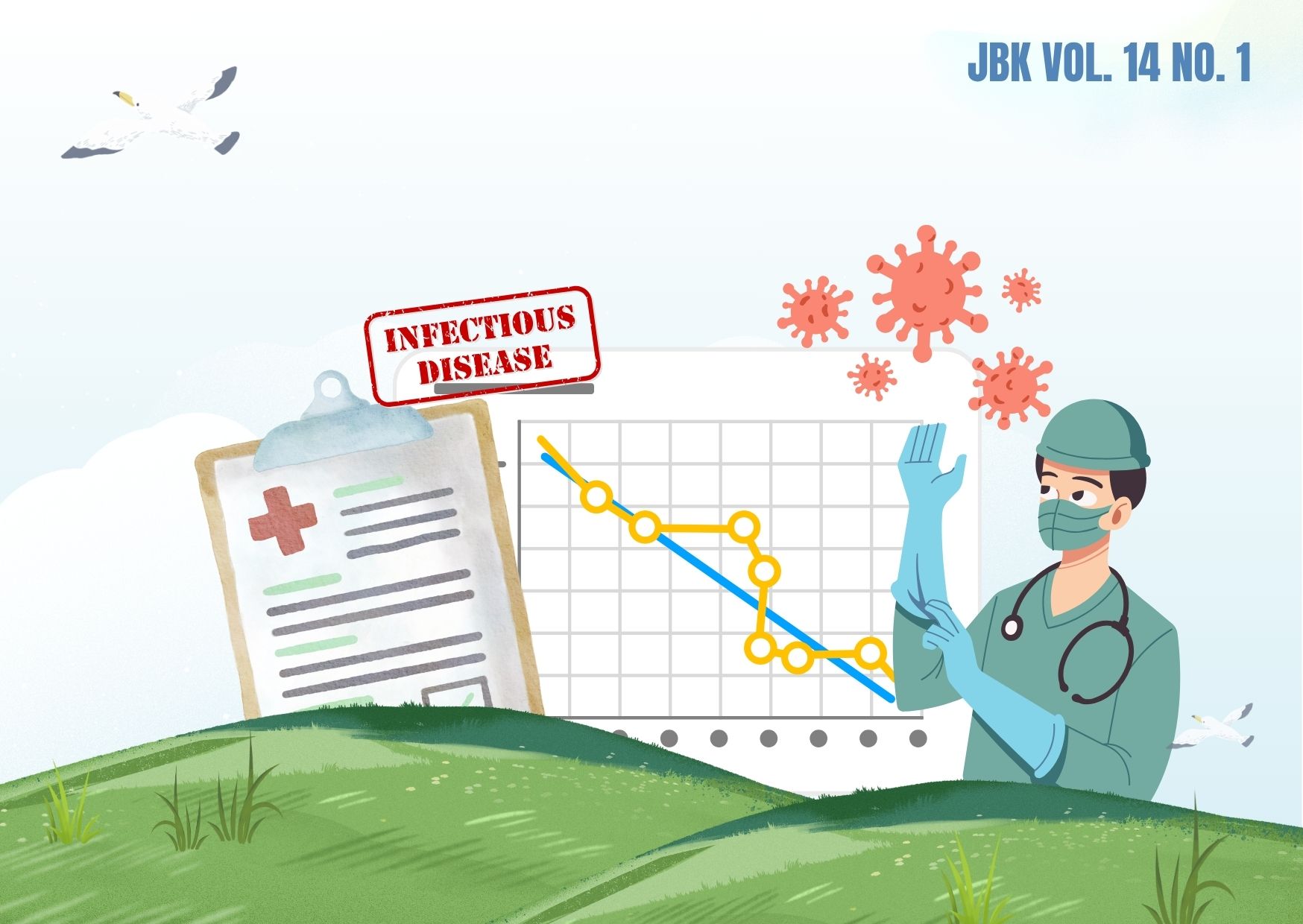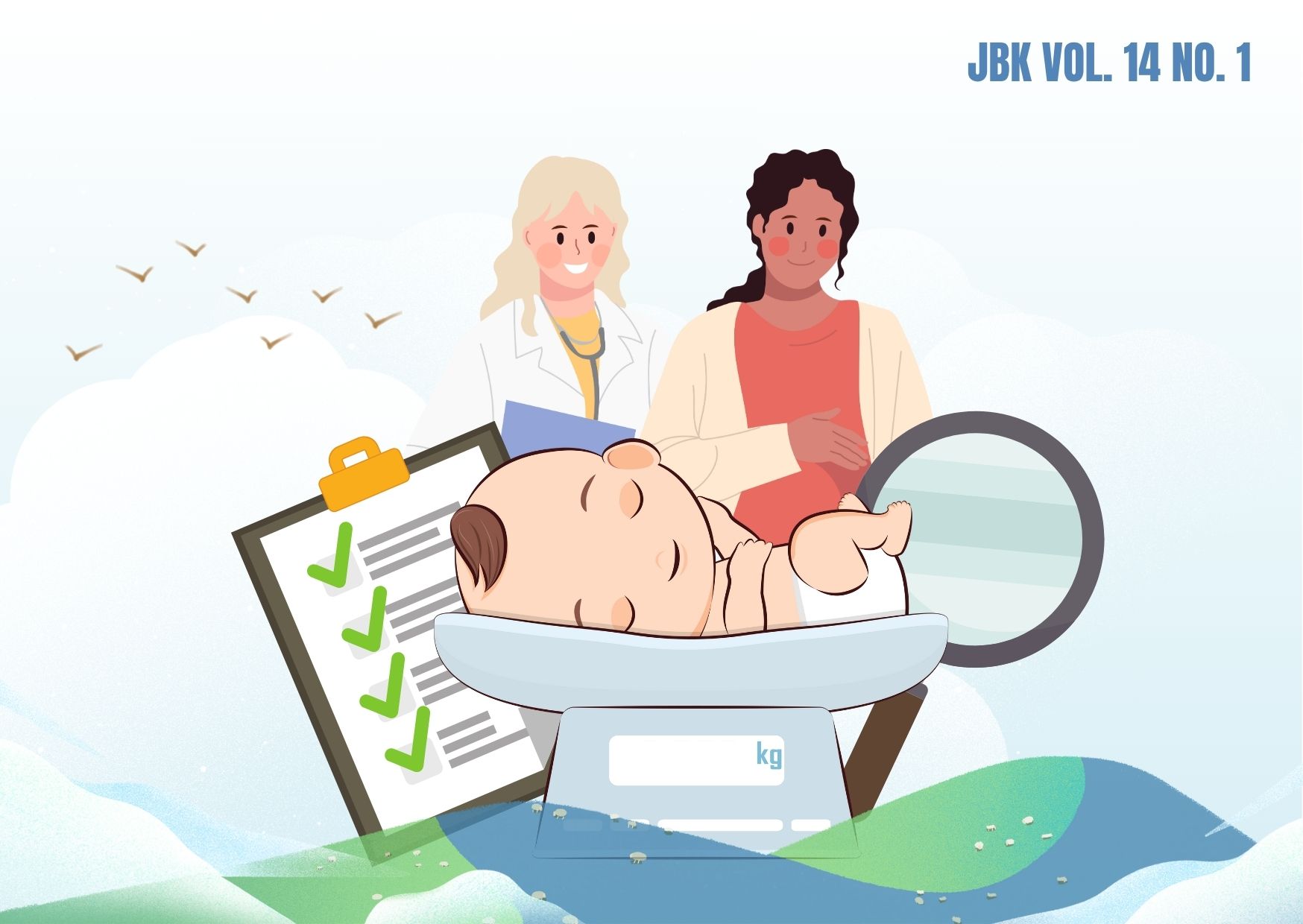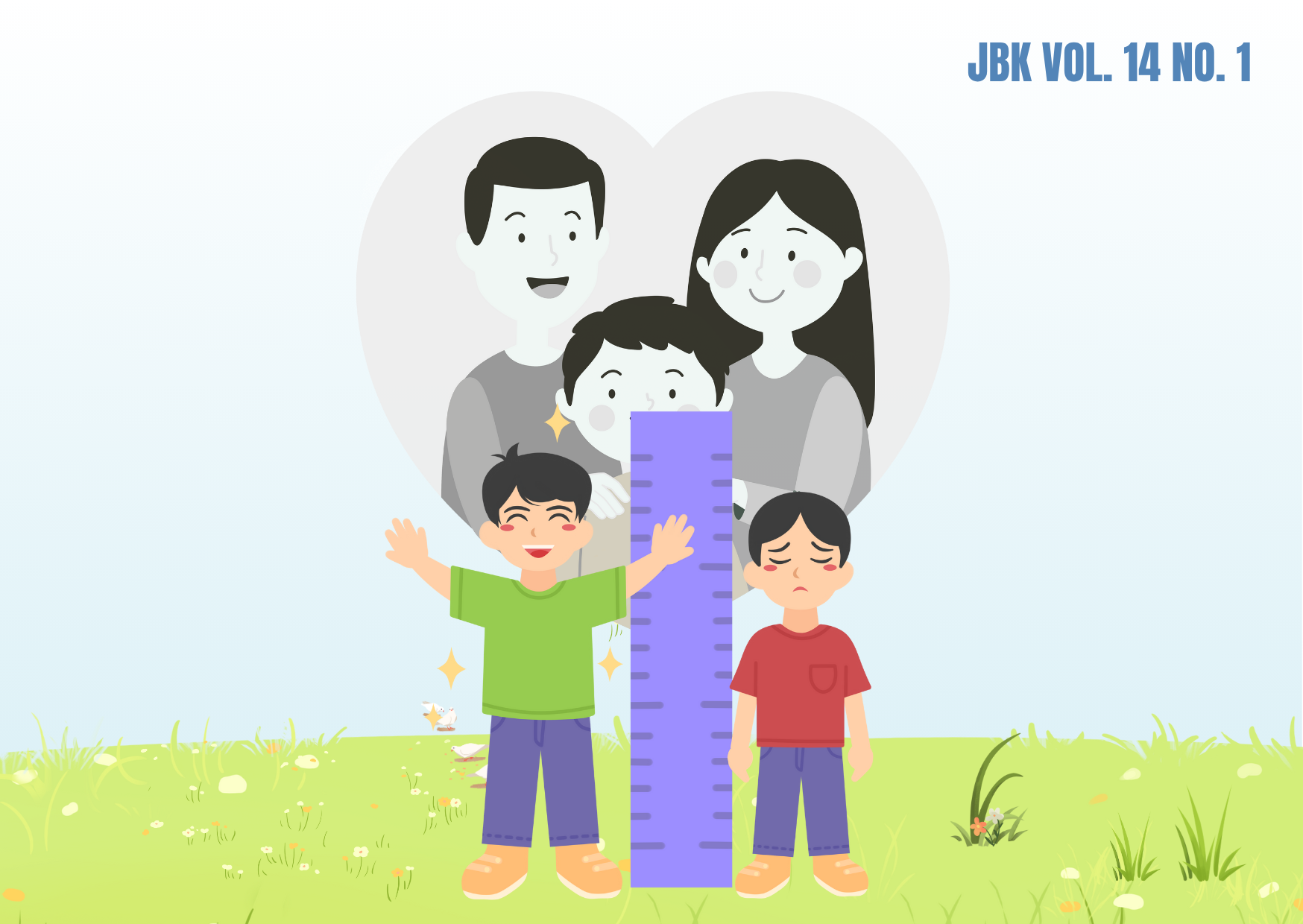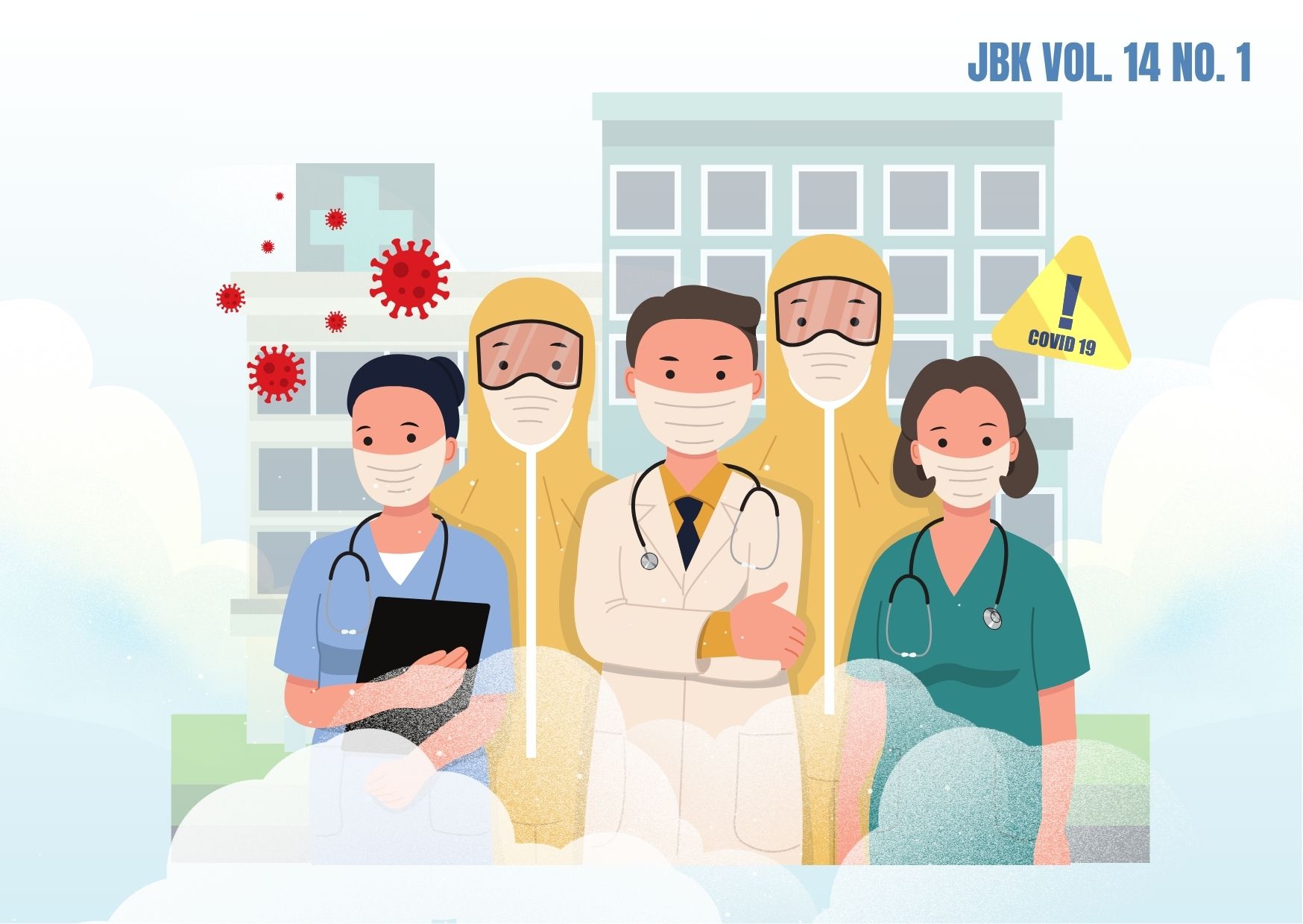FORECASTING THE NUMBER OF VERTICAL REFERRALS FOR BPJS PARTICIPANTS AT HEALTH SERVICE CENTER IN UNIVERSITAS AIRLANGGA USING ARIMA MODEL

Downloads
Autoregressive Integrated Moving Average (ARIMA) is a time series forecasting method to estimate future events using past data. It can perform short-term forecasting on data with all types of data patterns, both seasonal and non-seasonal data. This study aims to report the best ARIMA for vertical referral cases in BPJS PLK Universitas Airlangga participants. This method used to analyze the number of vertical references for BPJS participants. The research method used is non-intrusive using secondary data and the sample used was the entire population of vertical point reference data for BPJS PLK UNAIR in 2020. The purposive sampling used until 266 data are found. The results of the analysis show that the ARIMA model used to estimate the number of vertical referrals participants is AR [6] or also known as ARIMA [6,0,0]. As for PLK Campus B UNAIR is ARIMA [0,1,1]. In this model, all diagnostic tests have met the assumption requirements. The results of forecasting the number of vertical referrals in PLK Campus C shows the number of vertical referrals will tend to have a constant or horizontal trend with a smaller reference value than the data in 2020. Meanwhile, the number of vertical referrals of PLK Campus B UNAIR has decreased in number compare to 2020. This forecasting has a MAPE value below 10% so the forecasting model has a very good performance in forecasting examples of vertical referrals for BPJS participants in the future. Then the results are useful for making policies to deal with future cases.
Makridakis S, Wheelwright SC, Victor EM. Metode Aplikasi Peramalan, second edition. Jakarta: Erlangga; 1999. Available from: http://lib.kemenperin.go.id/neo/detail.php?id=182370
Baroroh N. Analisis Pengaruh Modal Intelektual Terhadap Kinerja Keuangan Perusahaan Manufaktur di Indonesia. J Din Akunt. 2013;5(2):172–82. Available from: https://journal.unnes.ac.id/nju/index.php/jda/article/view/2997/3034
Hakim, R., Despa, D., dan Hakim L. Prediksi Beban Listrik Jangka Pendek Menggunakan Metode Autoregressive Integrated Moving Average (ARIMA). Electr J Rekayasa dan Teknol Elektro. 2020;14(1):26–33. doi: https://doi.org/10.23960/elc.v14n1.2143
Susanto Y, Ulama BSS. Pemodelan Curah Hujan dengan Pendekatan Model ARIMA, Feed Forward Neural Network dan Hybrid (ARIMA-NN) di Banyuwangi. J Sains dan Seni ITS. 2016;5(2):145–50. Available from: https://ejurnal.its.ac.id/index.php/sains_seni/article/view/16409
Wibowo AR, Ginting R, Ayu SF. Peramalan dan Faktor Faktor yang Mempengaruhi Harga Bawang Merah di Sumatera Utara. J Soc Econ Agric Agribus. 2014;3(2):24–37. Available from: https://jurnal.usu.ac.id/index.php/ceress/article/view/8096
Kasanah LN. Aplikasi Autoregressive Integrated Moving Average (ARIMA) untuk Meramalkan Jumlah Demam Berdarah Dengue (DBD) di Puskesmas Mulyorejo. J Biometrika dan Kependud. 2016;5(2):177–86. doi: http://dx.doi.org/10.20473/jbk.v5i2.2016.177-189
Pamungkas MB, Wibowo A. Aplikasi Metode ARIMA Box-Jenkins untuk Meramalkan Kasus DBD di Provinsi Jawa Timur. Indones J Public Heal. 2018;13(2):181–94. doi: http://dx.doi.org/10.20473/ijph.v13i2.2018.183-196
Hermanto YD, Mahmudah. Pemodelan Fungsi Transfer pada Kasus Penyakit Jantung Koroner (PJK) yang Dipengaruhi oleh Hipertensi Esensial. J Ilm Kesehat Media Husada. 2017;6(1):59–66. doi: https://doi.org/10.33475/jikmh.v6i1.54
Ministry of Health. Peraturan Menteri Kesehatan Republik Indonesia Nomor 001 Tahun 2012 tentang Sistem Rujukan Pelayanan Kesehatan Perorangan. 2012. Available from: https://www.kemhan.go.id/itjen/wp-content/uploads/2017/03/bn122-2012.pdf
Health Social Security Agency. Panduan Praktis Sistem Rujukan Berjenjang. Humas BPJS Kesehat. 2015;1–16. Available from: https://bpjs-kesehatan.go.id/bpjs/index.php/arsip/detail/37
Health Social Security Agency. Panduan Praktis Sistem Rujukan Berjenjang Panduan Praktis Sistem Rujukan Berjenjang. 2014. Available from: https://bpjs-kesehatan.go.id
Dedi R. Analisis Ekonometrika dan Runtun Waktu Terapan dengan R: Aplikasi untuk Bidang Ekonomi, Bisnis, dan Keuangan. Yogyakarta: Andi; 2011. Available from: http://inlislite.uin-suska.ac.id/opac/detail-opac?id=17443
Lin C. Social Reaction Toward The 2019 Novel Coronavirus (COVID"‘19). Soc Heal Behav. 2020;3(1):1–2. Available from: http://www.shbonweb.com/text.asp?2020/3/1/1/280554
Damodar G. Dasar-Dasar Ekonometrika. Jakarta: Rieneka Cipta; 1997.
Aswi, Sukarna. Analisis Deret Waktu Teori dan Aplikasi. Makasar: Andira Publisher; 2006. Available from: https://www.researchgate.net/publication/338293807_Analisis_Deret_Waktu_Teori_dan_Aplikasi
Ekananda M. Analisis Data Time Series. Jakarta: Mitra Wacana Media; 2014. Available from: https://opac.perpusnas.go.id/DetailOpac.aspx?id=916783
Sungkawa I, Megasari RT. Penerapan Ukuran Ketepatan Nilai Ramalan Data Deret Waktu dalam Seleksi Model Peramalan Volume Penjualan PT Satriamandiri Citramulia. ComTech. 2011;2(2):636–45. doi: https://doi.org/10.21512/comtech.v2i2.2813
Astiningrum M, Pramitarini Y, Windarto AQ. Pengembangan Sistem Peramalan Jumlah Penggunaan Tenaga Listrik di PPPPTK VEDC Malang. Semin Informaika Apl Polinema. 2017; Available from: http://jurnalti.polinema.ac.id/index.php/SIAP/article/view/156
Copyright (c) 2022 Jurnal Biometrika dan Kependudukan

This work is licensed under a Creative Commons Attribution-NonCommercial-ShareAlike 4.0 International License.
Copyright©2022 Jurnal Biometrika dan Kependudukan (Journal of Biometrics and Population)
This work is licensed under a Creative Commons Attribution-NonCommercial-ShareAlike 4.0 International License.
1. Copyright of all journal manuscripts is held by the Jurnal Biometrika dan Kependudukan.
2. Formal legal provisions to access digital articles of the electronic journals are subject to the provision of the Creative Commons Attribution-ShareAlike license (CC BY-NC-SA), which means that Jurnal Kesehatan Biometrika dan Kependudukan to keep, transfer media/format, manage in the form of databases, maintain, and publish articles.
3. Published manuscripts both printed and electronic are open access for educational, research, and library purposes. Additionally, the editorial board is not responsible for any violations of copyright law.



































